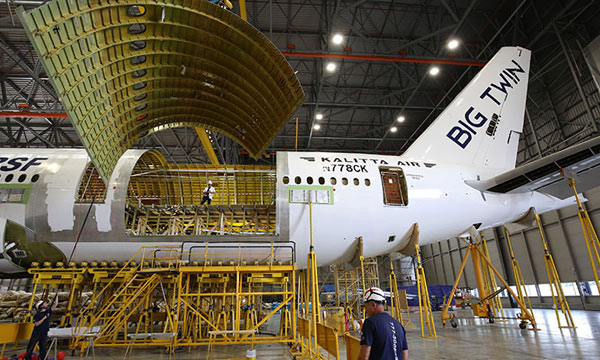Subscription Required
By Judson Rollins
July 3, 2023, © Leeham News: As the supply chain chaos of the past two years finally winds down, the air cargo industry is trying to prepare for future growth.

IAI's first 777 converted freighter, intended for Kalitta Air, has not flown since its initial testing flight on March 24. Source: IAI.
However, in an ironic twist, the industry’s near-to-intermediate term runway is constrained by some forces that propelled its supernormal profitability during the pandemic and recovery.
Thanks to growth in e-commerce, many industry observers revised their long-term growth forecasts upward. Cargo traffic growth estimates vary widely, from Cirium’s conservative 20-year expectation of 3.0% per year to Boeing’s optimistic call for 4.1% annually through 2042.
This year’s demand environment is less rosy as global trade falters, seaport backlogs have mostly cleared, shippers of high-value industrial goods suffer from microchip and other key commodity shortages, and recovering passenger airline service drives a glut of lower-deck “belly” capacity on most trade lanes.
The International Air Transport Association (IATA) recently said it expects air cargo demand to fall by 3.8% and revenues to contract by one-third for the full year. Cargo volumes were already down 5.3% year-over-year through April, said IATA.
Summary
- Express carriers are most exposed to short-term pain, but long-run prospects are brighter.
- Non-express carriers continue to be hard hit by excess capacity.
- Freighter conversion feedstock supply is tight.
- 777 P2F conversion slowed by possible certification issues; Boeing poised to sell more 777Fs?


